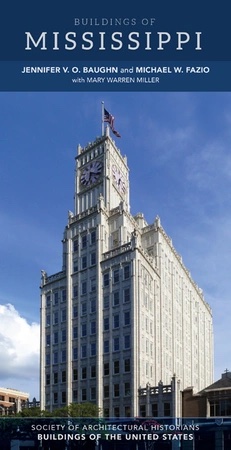
Wright never visited this site, but he required the Hughes family, whose wealth derived from the oil business, to choose a wooded and inclined site overlooking a pool that Wright called a “pond in a wooded glade.” Manifesting Wright’s Usonian ideal, the one-story, low concrete house with wide eaves and a hipped copper roof fades into the contours of the site and presents a streetside blank wall while offering its occupants views of the courtyard and pool. Often basing designs on a geometric shape, Wright here employed a parallelogram as his grid in a series of 60- and 120-degree angles, leading to the owner’s observation that the house should be measured in “triangular feet” instead of “square feet.” Separate public and private wings meet at the carport and workshop to create a Y-shaped footprint. Hughes’s financial difficulties and the death of his wife in the 1960s left the house derelict, its unreinforced concrete shifting on the Yazoo clay until Robert and Mary Adams saved the house in a multiyear restoration beginning in 1979.

